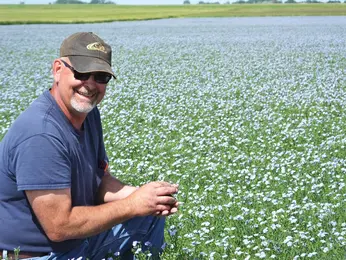As the agricultural community in South Dakota braces for another challenging crop season, state farmers are urged to remain vigilant against the persistent threat of tar spot, a plant disease affecting corn and posing a significant risk to crop health and yield. Last year, tar spot was identified in 46 out of 66 South Dakota counties, marking a significant spread across the state, particularly affecting eastern regions during harvest time.
Connie Strunk, a renowned plant pathologist with South Dakota State University Extension, emphasizes the importance of early detection and management to local producers. “Tar spot is expected to make an unwelcome reappearance this year,” notes Strunk. “Given the high incidence last year, proactive monitoring is crucial for protecting our farms’ productivity and economic viability.”

South Dakota State University Extension
The agricultural industry in South Dakota stands as a vital pillar for the state’s economy, thereby making crop diseases like tar spot particularly concerning. With millions of acres dedicated to corn production, ensuring the health and longevity of these crops is pivotal not only for the economy but also for the livelihoods of thousands of farmers. South Dakota, known for its vast landscapes and agrarian prowess, relies heavily on its farming community.
The state has seen significant developments and investments in technology and agronomy to mitigate such plant diseases. Farmers and landowners are encouraged to engage with local extension services and agricultural experts to stay informed about the latest management practices, which include monitoring environmental conditions conducive to tar spot proliferation and utilizing fungicides appropriately.
Communities across South Dakota are coming together in workshops and seminars to discuss effective strategies to combat tar spot. These forums, facilitated by South Dakota State University Extension and other agricultural bodies, provide essential platforms for sharing knowledge, experiences, and innovative practices to combat this invasive disease.
In recent years, South Dakotans have shown resilience and adaptability in the face of agricultural adversities. By fostering a collaborative environment where farmers can learn from one another and implement integrated pest management strategies, the community aims to uphold its reputation as a leading corn producer.
As the state navigates these challenges, the role of agricultural extension services becomes increasingly significant. Stakeholders are encouraged to remain engaged with such initiatives and to leverage the expertise available to them. By doing so, South Dakota’s agricultural sector can continue to thrive and contribute to the state’s economic prosperity.
For more information and resources related to tar spot and other agricultural concerns, farmers are advised to contact South Dakota State University Extension or their local county extension offices. Interested individuals may also email Connie Strunk at connie.strunk@sdstate.edu for further guidance.
With a forward-looking approach and a commitment to sustainable farming practices, South Dakota is set to tackle the challenges posed by tar spot head-on, ensuring a productive and prosperous agricultural future.
